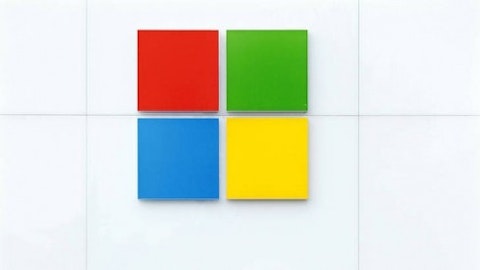People usually consider Facebook Inc (NASDAQ:FB) a revolutionary step in expanding and maintaining social connections, which transformed the niche hobby of sharing content over the Internet into a mainstream one.
However, many people often overlook an industry that Facebook Inc (NASDAQ:FB) has permanently altered – digital photography.
Living our Lives One Photo at a Time
Prior to the rise of Facebook Inc (NASDAQ:FB), people usually shared photos organized into albums on blogs and personal websites. After Facebook Inc (NASDAQ:FB) became the standard method of social networking, people became much more spontaneous with their photo sharing. Single photos of food, drinks, pets and friends became much more common. For better or for worse, our society became a lot more obsessed with sharing otherwise mundane daily events with our whole social web. The numbers are astounding – every day, 300 million photos are uploaded to Facebook Inc (NASDAQ:FB), 40 million are sent to Instagram and another 4.5 million go to Flickr.
At the center of all of this social media-fueled digital photography is the smartphone. The ability of smartphones to instantly share photos to Facebook Inc (NASDAQ:FB) or Twitter has turned digital cameras into a clunky, outdated technology.
Instagram Makes my Food Look Good, but a DSLR Makes it Look Even Better…
As people grew more obsessed with cultivating their online personas via digital photography, the quality of regular smartphone photos started to look poor compared to photos from higher-end DSLRs.
I’m sure many of us have witnessed the 21st century practice of taking photos of food with DSLRs before. This is an issue that Facebook attempted to address with its $1 billion purchase of Instagram, which enhanced smartphone photos significantly with DSLR effects.
In response, shrewd camera makers such as Canon Inc. (ADR) (NYSE:CAJ) produced more higher-end cameras, in a bid to remain competitive with smartphones on an image quality basis. This prompted an interesting response from two major players in the smartphone industry – Nokia Corporation (ADR) (NYSE:NOK) and Samsung (NASDAQOTH:SSNLF). Both companies recently introduced smartphones that are equipped with high-quality optical zoom lens, rather than software-driven digital ones.
Meet the Super-Camera Amartphones
First of all, current generation high-end smartphones are no slouch in digital photography. Apple Inc. (NASDAQ:AAPL)’s iPhone 5’s camera takes photos up to 8.0 megapixels, Nokia Corporation (ADR) (NYSE:NOK)’s Lumia 920 series goes up to 8.7 megapixels, and Samsung (NASDAQOTH:SSNLF)’s Galaxy S4 is at the top of the class at 13 megapixels. For most casual users, the quality difference in photos taken by these three smartphones is hard to spot. For purists, however, mechanical parts in dedicated cameras are still considered superior to software-driven substitutes.
That’s where Nokia and Samsung come in. Nokia’s upcoming EOS Pureview 41-megapixel smartphone, which features a traditional mechanical shutter and optical image stabilization, is aimed directly at the dedicated digital market which generally purchases cameras from Canon Inc. (ADR) (NYSE:CAJ), Nikon or Pentax. The EOS uses a xenon flash, which is generally considered more potent than a traditional LED flash, and uses the same Carl Zeiss lenses which bless Nokia’s phones with a noticeable advantage in digital photography.
Samsung, on the other hand, is releasing the Galaxy S4 Zoom, a variant of its full-featured Galaxy S4 smartphone. The Zoom has a 16-megapixel digital camera, also equipped with an optical image stabilizer, xenon flash and a 10X optical zoom lens. The Zoom goes a step further than Nokia, using its zoom ring as a method to instantly take a share a photo in the middle of a phone call.
Both the EOS Pureview and the Zoom will be considerably bulkier than traditional smartphones, due to their protruding optical lenses. Nokia and Samsung are notably the only two smartphone makers dabbling in this concept of a full-featured camera smartphone. Both companies have released similar products in the past – Samsung released the Galaxy Camera, which was a full-featured camera with Internet connectivity, and Nokia created the 808 Pureview, which ran on Symbian. Neither product has been particularly successful in carving out the desired niche.
Can these Two Products be Successfully Merged?
Just as MP3 players were successfully merged with smartphones, it is logical to assume that higher-end digital cameras and smartphones will eventually be joined as well. However, there are a few hurdles that Nokia and Samsung must clear if their products are to achieve any degree of mainstream acceptance.
First and foremost, most people might simply think that regular smartphones already take acceptable photos. Therefore, they will value portability more than image quality. Although 41 and 16 megapixels sound technically impressive, it’s difficult to notice such high resolution when the photos are primarily shared online in compressed formats.
The three most popular cameras on Flickr are currently Apple’s iPhone 4, iPhone 4S and iPhone 5, which indicates that most people are not using higher-end cameras from Canon Inc. (ADR) (NYSE:CAJ) or Nikon to take photos to share online. Instead, the one-click ability of smartphone apps to share photos is the most important feature. Therefore, packing a bulky optical lens onto a smartphone might not make it all that more popular than a slimmer one with a regular camera.
Lastly, a look at Canon Inc. (ADR) (NYSE:CAJ)’s top and bottom line growth shows that the market for both lower-end digital cameras and higher-end DSLRs is shrinking at a rapid pace. Last quarter, Canon Inc. (ADR) (NYSE:CAJ) reported a 34% year-on-year plunge in profit on a 1.5% decline in revenue. To make matters worse, Canon Inc. (ADR) (NYSE:CAJ) slashed its full-year sales target for compact cameras by 15% to 14.5 million units, citing an increasing number of its users switching to smartphones. Global shipments of all digital cameras in the industry dropped by nearly half from the prior year quarter. Although Canon isn’t about to become the next Eastman Kodak, its bleak numbers indicate that everyday users simply don’t care that much about professional image quality.
The Foolish Bottom Line
Considering Canon’s decline, and the continuing popularity of the iPhone and Android devices for everyday snapshots, I believe that Nokia’s EOS Pureview and Samsung’s Galaxy S4 Zoom will be poorly received. There’s simply not a market for these “super camera” smartphones yet, and there might never be, since everyday users will stick with smartphones, while true photographers, hobbyists and purists will buy high-end DSLRs.
However, investors should still pay attention to this revolution in digital photography, and the next time you see a guy pointing his iPhone at a sushi dinner, smile and think of how much Facebook has changed how we view the world around us.
The article Will “Super Camera” Smartphones Be the Next Big Thing? originally appeared on Fool.com.
Leo Sun owns shares of Nokia and Facebook. The Motley Fool recommends Facebook. The Motley Fool owns shares of Facebook. Leo is a member of The Motley Fool Blog Network — entries represent the personal opinion of the blogger and are not formally edited.
Copyright © 1995 – 2013 The Motley Fool, LLC. All rights reserved. The Motley Fool has a disclosure policy.






